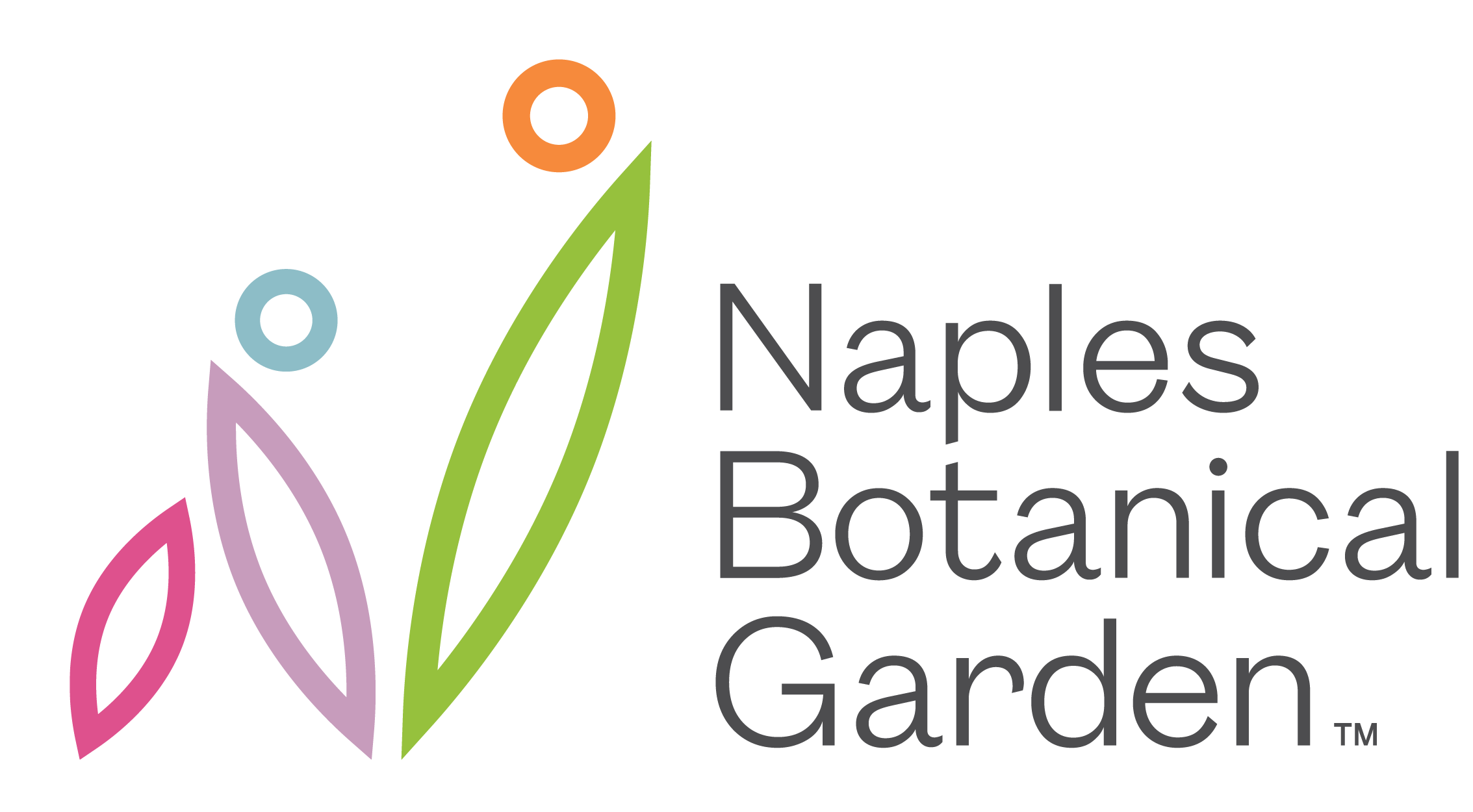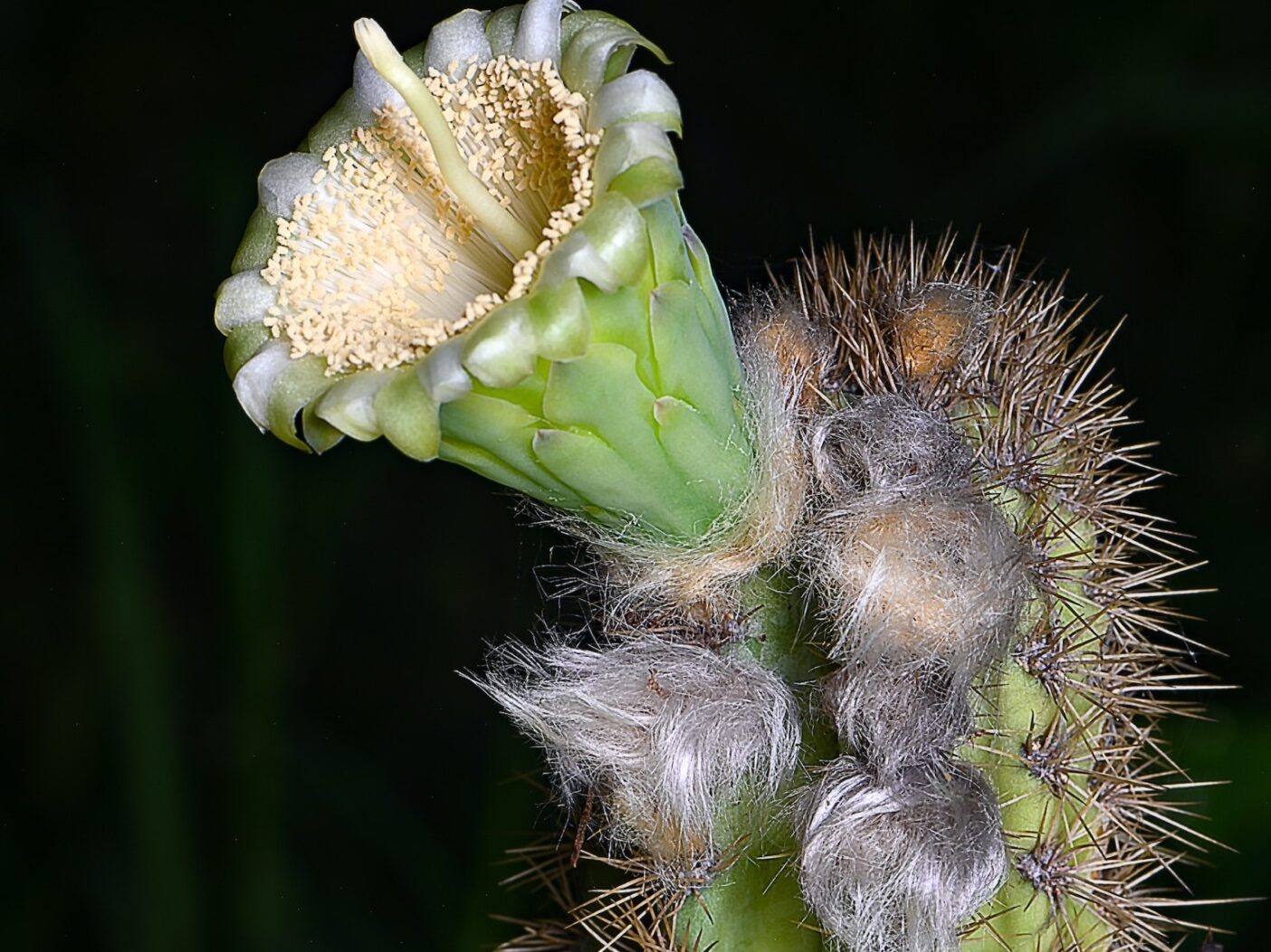
Loss of First Species in US to Sea-Level Rise Reinforces Plant Conservation’s Urgency
A plant made headlines this month, though not for reasons we like: Scientists believe the United States has lost its first vascular plant species in the wild due to sea-level rise.
The Key Largo tree cactus (Pilosocereus millspaughii) was known to exist in the U.S. in only a single location, a limestone outcrop at John Pennekamp Coral Reef State Park. A biologist discovered it in 1992, after seeing its columns, which can reach as tall as 20 feet, emerge from a mangrove canopy. Writing in the July 9 issue of the Journal of the Botanical Research Institute of Texas, a group of researchers tracking the population concluded that last year they “salvaged the last remnants of what was once a healthy and thriving population.”
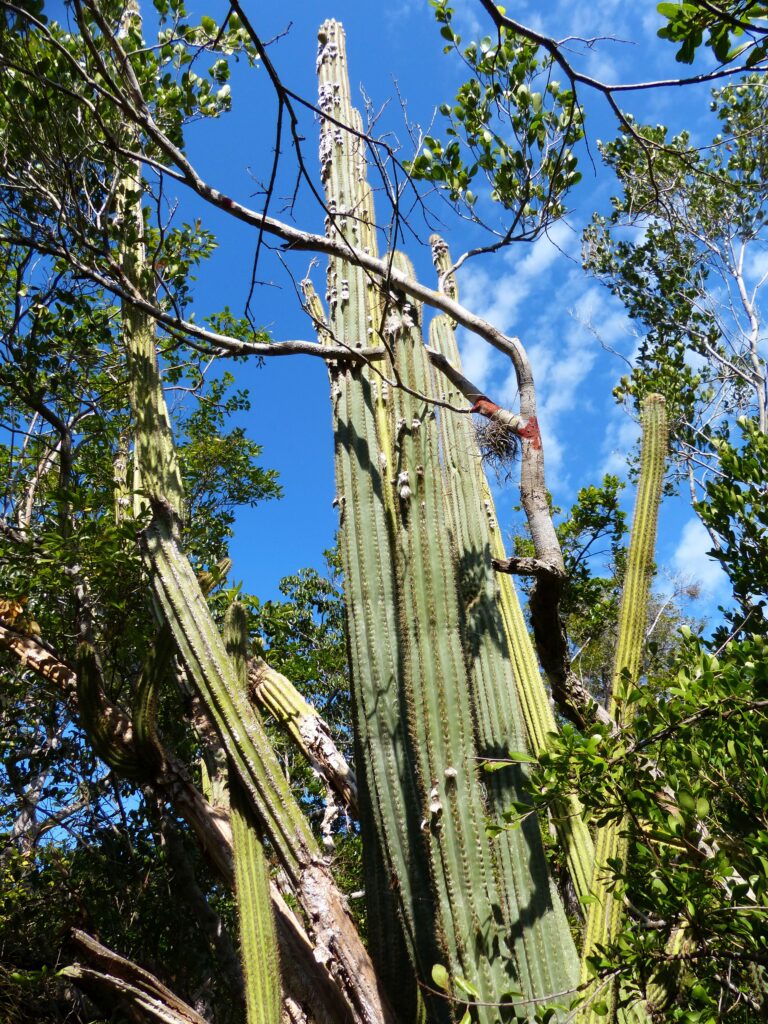
Above: This Key Largo tree cactus (Pilosocereus millspaughii) stand once towered over a treeline at John Pennekamp Coral Reef State Park. The population has since collapsed. Photo by Susan Kolterman
The cactus’s genetics, however, are not lost. Conservationists at Miami’s Fairchild Tropical Botanic Garden and the Florida Park Service for years had been monitoring the stand. When it became clear the cacti would not make it, they collected its seeds and stalks. Today, there are about 60 plants being grown from seeds and cuttings at Fairchild and John Pennekamp State Park and about 1,000 seeds in long-term storage at Fairchild and the U.S. Department of Agriculture. Fairchild has sent cactus samples to Desert Botanical Garden in Arizona as a backup and intends to send some to our Garden as well, pending Florida Park Service approval.
Additionally, the species persists in other parts of its range.
The cactus’s demise—and conservationists’ response—underscores the role botanical gardens play in protecting the world’s plants. While guests enjoy these institutions’ cultivated beauty, they may not realize their visits support the critical work of conserving plants and their ecosystems.
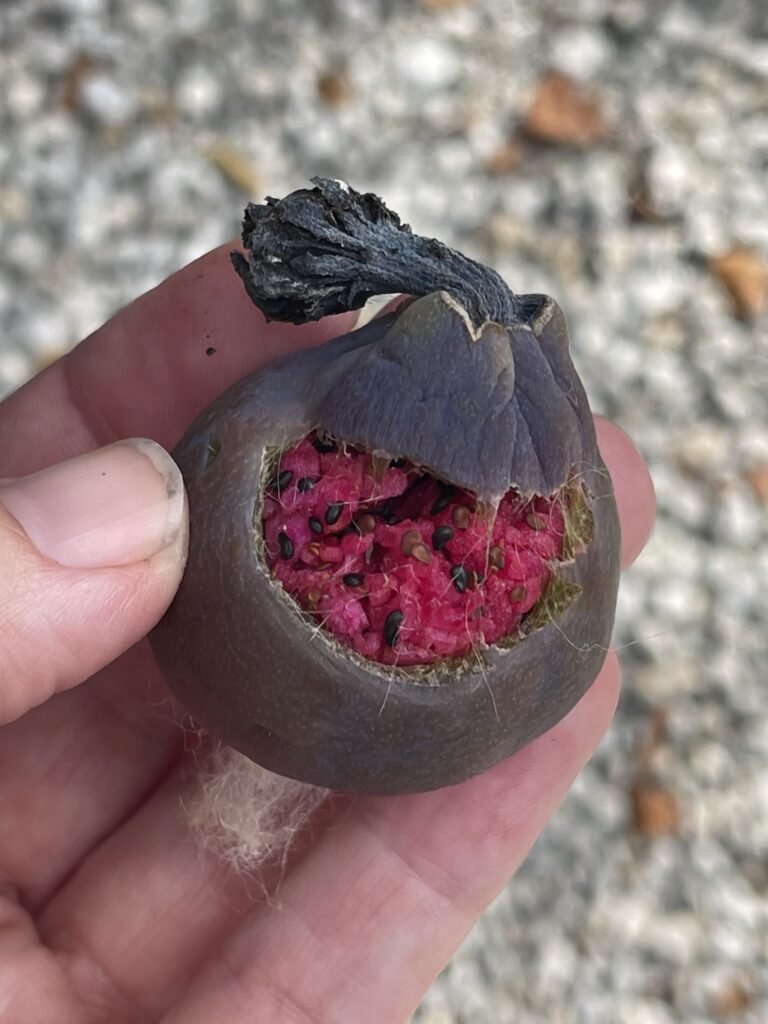
“The loss of this species from the U.S. is sad, but it would be a whole lot sadder if not for the years of plant conservation efforts surrounding it,” says Jennifer Possley, the study’s lead author and Fairchild’s South Florida Conservation Program Manager. The routine monitoring, she says, allowed scientists to pinpoint the causes of the plant’s death and collect its genetics, opening the possibility of re-introducing it in the wild.
The study triggered global media attention—and highlighted the plight of coastal species.
“I think for many people, biodiversity loss is an abstract concept that isn’t affecting us here and now,” Possley says. “But this sad example of the Key Largo tree cactus turns that notion on its head and is hopefully a wake-up call.”
A Swift Decline
The Key Largo population once topped 120 stems. By 2015, the population was halved. Conservationists that year observed significant damage from animals, but camera traps did not identify a culprit, and the researchers never again saw evidence of such foraging. Instead, they focused on saltwater inundation as the primary cause of death.
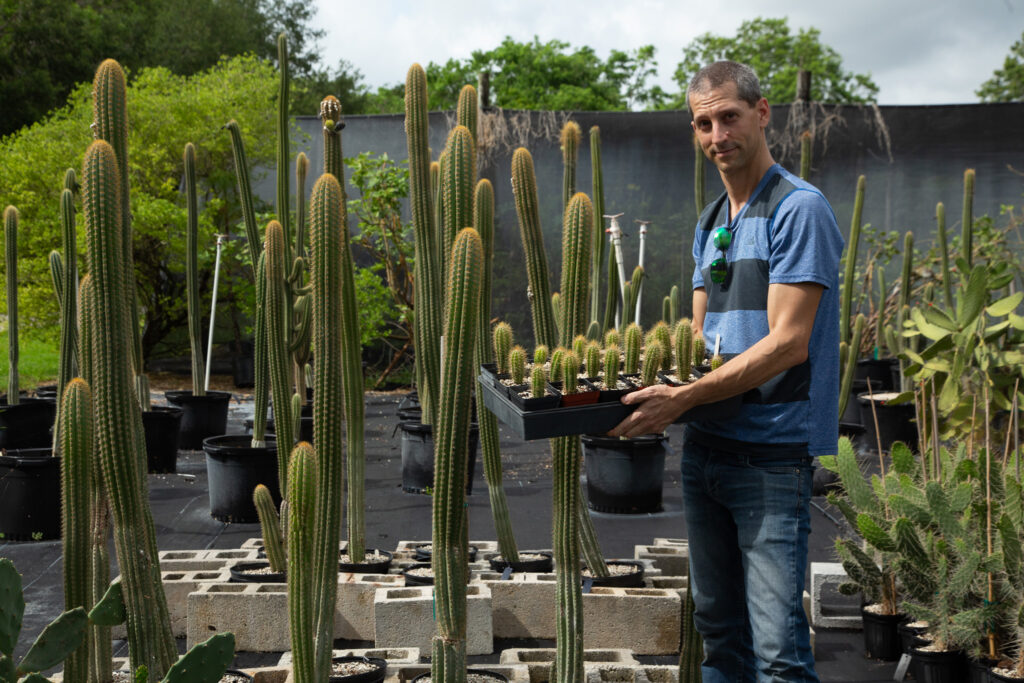
Hurricane Irma in 2017 flooded Key Largo and further decimated the stand, then numbering less than 30. By 2019, king tide events and months-long flooding eroded what was left. That year, the “once-massive colony had completely collapsed,” the authors wrote.
They predict other species likely will suffer the same fate. “In general terms, all plant species found only in low-lying coastal areas that are not saltwater tolerant are at high risk,” Possley says.
There is particular urgency in the American Southeast where recent studies show sea levels rising at triple the global rate.
Our Garden’s Work
In prioritizing conservation needs, our Garden’s specialists look for potential botanical victims of invasive pests, saltwater intrusion, flooding, and other risks, Vice President of Conservation Chad Washburn explains. We’re collecting seeds from the Florida thatch palm (Thrinax radiata) with our partners at Rookery Bay National Estuarine Research Reserve. The palm may be widely cultivated, but its wild populations are considered endangered in Florida. Moreover, Rookery Bay represents the northernmost part of its range, and we want to capture those genetics before rising seas claim more of their shoreline populations.
“Where tree cactus was extirpated from the Keys, the Thrinax radiata will be extirpated locally in its range as well. It’s the same story,” says Washburn. “Without that first step of collecting and studying these species, we cannot work to preserve them for the future.”
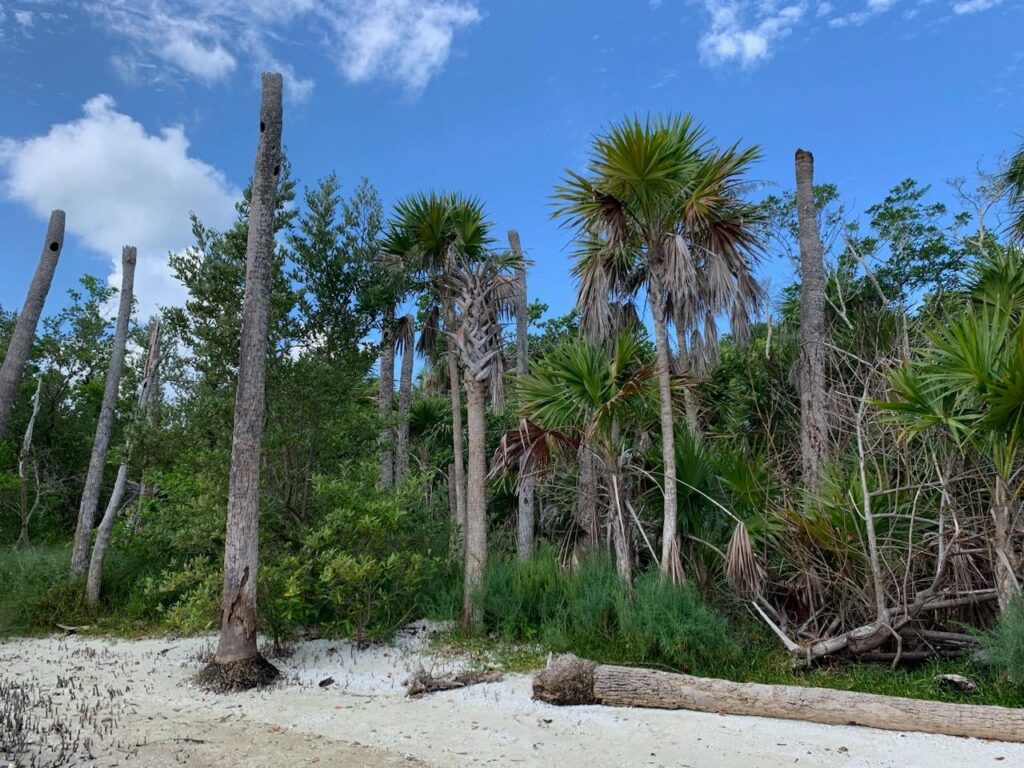
Similarly, the Garden rushed to save a population of swamp bay trees (Persea palustris), which were dying by the millions as a result of a fungus spread by a nonnative, invasive beetle. In addition to wishing to protect swamp bay for its own merits, the species is a wild relative of the avocado tree. Its genes, if selectively introduced, potentially could help bolster that important crop’s resilience.
Our staff also participates in the Florida Plant Rescue, a project organized and sponsored by the Center for Plant Conservation (CPC), a national organization working to safeguard native plants. The CPC identified 200 at-risk Florida species and has spearheaded collaborations among botanical gardens and other conservation organizations to save them. Our next Florida Plant Rescue mission will take us to Big Cypress National Preserve to conserve selected native plant species in the 729,000-acre wilderness. We’re working closely with Fairchild on this effort, and hopefully soon, similar efforts in Everglades National Park.
In addition to collecting at-risk plants, we also target species that have not been conserved at other botanical gardens, those that could be important for ecosystem restoration projects, and those that are prevalent now but may face future risks.
“The work that we are doing now to study, collect, and protect these imperiled species forms the foundation of our future,” Washburn says. “Armed with knowledge and plants, we can ensure that these species and the ecosystems that they depend upon are able to survive for future generations.”

About the Author
Jennifer Reed is the Garden’s Editorial Director and a longtime Southwest Florida journalist.
